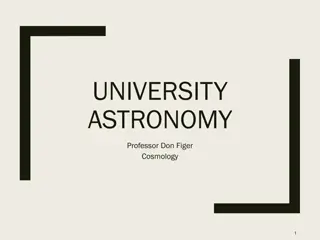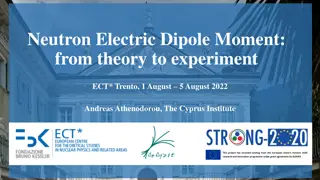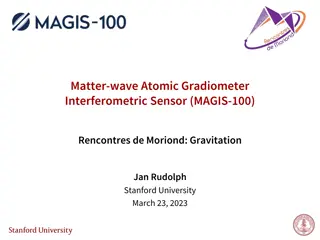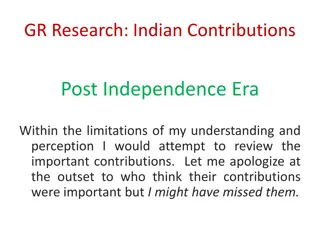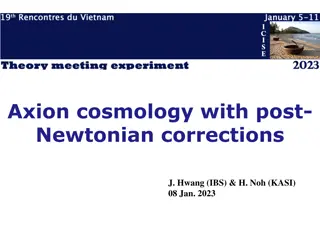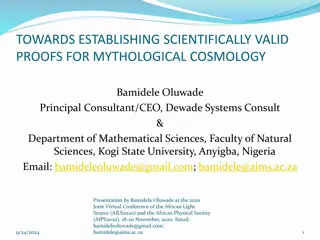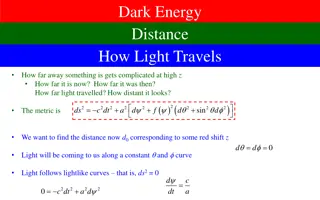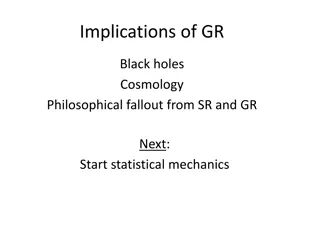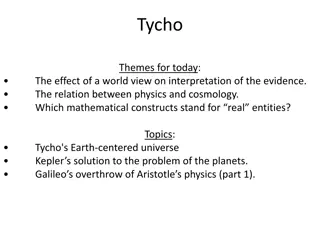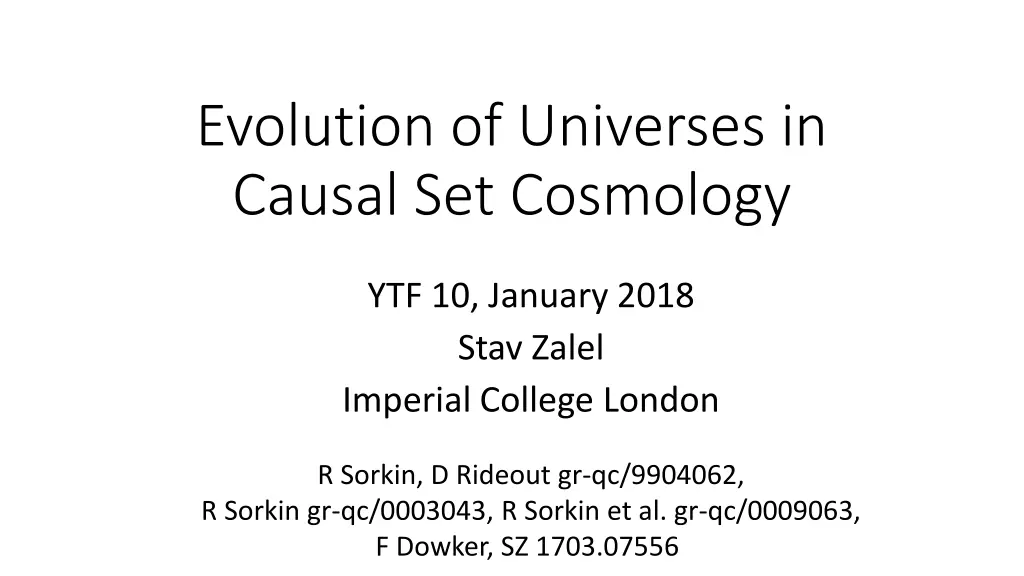
Evolution of Universes in Causal Set Cosmology
Explore the concept of causal sets in quantum gravity and their role in the growth and evolution of spacetime, with insights into classical sequential growth models, cosmologies, and bouncing cosmology.
Download Presentation

Please find below an Image/Link to download the presentation.
The content on the website is provided AS IS for your information and personal use only. It may not be sold, licensed, or shared on other websites without obtaining consent from the author. If you encounter any issues during the download, it is possible that the publisher has removed the file from their server.
You are allowed to download the files provided on this website for personal or commercial use, subject to the condition that they are used lawfully. All files are the property of their respective owners.
The content on the website is provided AS IS for your information and personal use only. It may not be sold, licensed, or shared on other websites without obtaining consent from the author.
E N D
Presentation Transcript
Evolution of Universes in Causal Set Cosmology YTF 10, January 2018 Stav Zalel Imperial College London R Sorkin, D Rideout gr-qc/9904062, R Sorkin gr-qc/0003043, R Sorkin et al. gr-qc/0009063, F Dowker, SZ 1703.07556
Causal sets: an approach to quantum gravity Spacetime is discrete and dynamical Spacetime is a causal set, (C, ). Hasse diagram The order relation, , is transitive: ? ?,? ? ? ?. Causal set elements are spacetime atoms. The partial order gives the causal structure of spacetime. Spacetime grows by accretion, or birth , of new elements. The growth is a physical process. The passage of time is a manifestation of this growth. The growth is governed by stochastic dynamics. ? ? ? ?
Poscau Figure from: arXiv:gr-qc/9904062
Classical Sequential Growth Models A generic class of stochastic causet growth models, derived from physically motivated conditions. (Sorkin, Rideout, arXiv:9904062). ? ?? ??+1=?(?,?) ?(?,0) ? ? ? ? ? ? ?,? = ?? ?=? Each CSG model is specified by a countable set of coupling constants ?? = ?0,?1,?2, , defined up to an overall constant, with ?0> 0 ,?? 0 ? > 0.
Interpreting the ??s ?? is the relative probability for the new elements to choose a particular subset of cardinality ? to form relations with. We call the chosen elements proto-ancestors. ? = 11 ? = 4 ? = 2 ? = 9 This set of proto- ancestors is chosen with relative probability ?4
Classical Sequential Growth Models ?(9,2) ?(11,0) ? ?11 ?12= ? ? ?
CSG Cosmologies Causal immortality: every element has an element to its future. Past-finite, future-infinite. {?0= 1,??= 0 ? > 0} Dust universe Big-bang universe. Originary model. Forest universe {?0= ?1= 1,??= 0 ? > 1} Cycles of cosmic collapse and expansion Transitive percolation {??= ??}
Bouncing cosmology A post is an element which is related to every other element in the set. current era The current era is the set of elements to the future of the post. post past The past of the post (or the past ) is the set of elements to the past of the post. Big-crunch Big-bang arXiv:gr-qc/0003043, arXiv:gr-qc/0009063
Bouncing cosmology A post is an element which is related to every other element in the set. current era The current era is the set of elements to the future of the post. post past The past of the post (or the past ) is the set of elements to the past of the post. Big-crunch Big-bang
Bouncing cosmology The growth of the causet is governed by a CSG dynamics, ??. current era ? ?? ??+1=?(?,?) post ?(?,0) past ? ? ? ? ? ? ?,? = ?=? ?? ??
Effective dynamics The growth of the current era is governed by an effective CSG dynamics, ??. current era ?? ?(?,?) ?(?,0) ? ?? ??+1= ? ? ? ? ? ?,? = ?=? ? ??
Effective dynamics ? = 5 ? = 2 ? = 3 ? 3,2 ? = 11 ? = 2 ? = 9 ? 9,2 ?? The effective dynamics is a repackaging of the degrees of freedom. These are two equivalent descriptions require ? 9,2 = ? 3,2 ??
Effective dynamics The effective couplings in the current era after a post with ? ancestors: ?+1 ? ?0= ?? ? 1 ?=1 ?+1 ? + 1 ? ??= ??+?, ? > 0 ?=0 arXiv:1703.07556
Evolutionary cosmology Explaining homogeneity and isotropy Fine tuning of parameters in underlying theory. Evolutionary model in which parameters are renormalised at each evolutionary stage. Linear cyclic model Branching model
Branching universes arXiv:1703.07556
Whats next for causal set cosmology? Analysis of partial breaks. Analysis of RG flow. Studying CPT invariance in CSG dynamics.


![[PDF⚡READ❤ONLINE] Cosmology and Particle Astrophysics (Wiley-Praxis Series in As](/thumb/21627/pdf-read-online-cosmology-and-particle-astrophysics-wiley-praxis-series-in-as.jpg)





